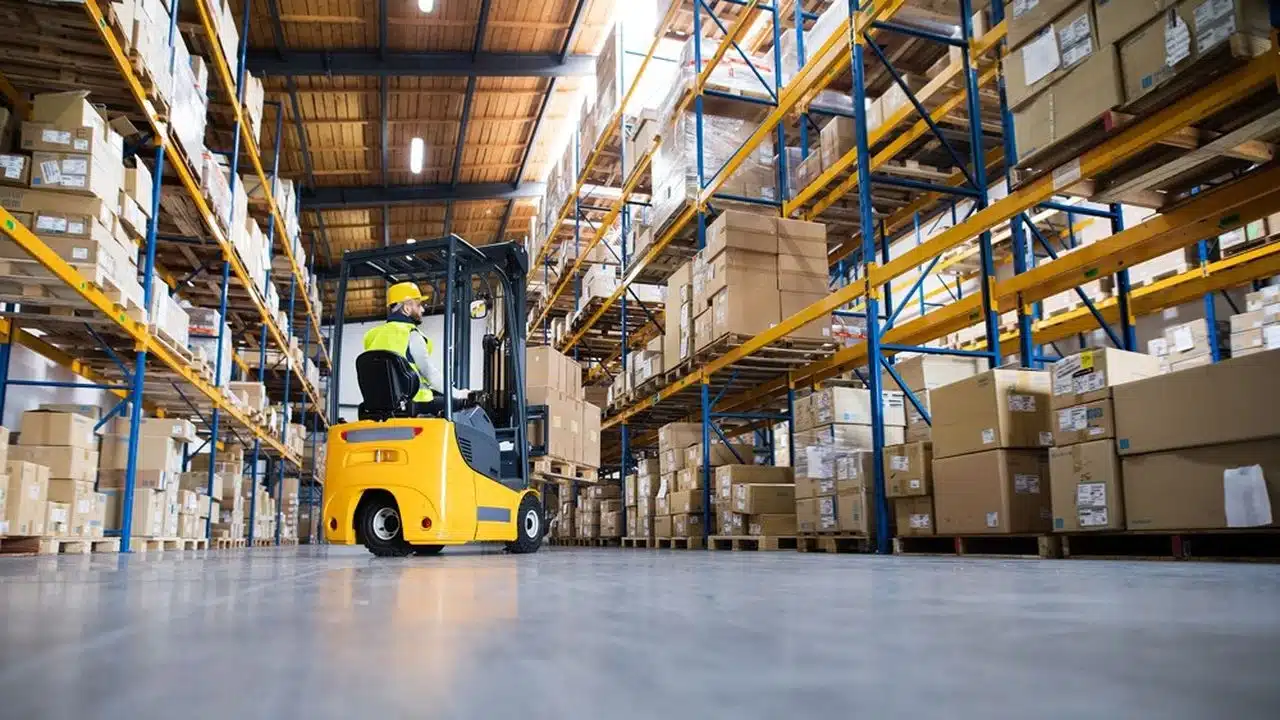Be Energy : Solutions Batteries Plus
LEAD-ACID BATTERIES
Who can benefit from regenerated batteries?
A driver of performance and ecological transition
The regeneration of lead-acid batteries is now an essential step for any player seeking to control costs, guarantee the availability of their equipment, and reduce their environmental impact in the long term. Using proven technical processes, it restores the capacity of used batteries, delays their replacement, and promotes the circular economy in industry, services, logistics, and the public sector.
Three main types of batteries concerned
Starter batteries
Starter batteries, which are ubiquitous in cars, commercial vehicles, agricultural machinery, and generators, often require high current during start-up. For professionals managing large fleets, regeneration offers an effective way to extend battery life, limit unexpected breakdowns, and achieve substantial savings.
Traction batteries
Essential for the mobility of forklifts, pallet trucks, small electric vehicles, and industrial automation systems, traction batteries undergo repeated cycles of intense use. Regeneration maximizes equipment availability, optimizes logistics operations, and reduces the TCO of industrial parks and logistics platforms.
Stationary batteries
Used as backup solutions or to power critical equipment (UPS, telecommunications, security devices), stationary batteries are at the heart of strategic infrastructures: data centers, hospitals, nuclear or tertiary sites. Their regeneration guarantees continuity of service while ensuring the financial and regulatory management of facilities.
Uses and benefits in each industry sector
1. Port and Maritime

In port and maritime environments, battery robustness and availability are crucial for the operation of handling equipment, dock tractors, light beacons, and tugboats. Port authorities, terminal operators, shipowners, and stevedores rely on these electrical systems on a daily basis. In both civil and military ports, the regeneration of lead-acid batteries (whether traction or stationary) significantly reduces downtime costs and prevents unscheduled stoppages. In the maritime environment, batteries also play an essential role on board ships (civilian and military) for powering navigation, lighting, and safety systems. Subject to salt corrosion and temperature variations, these batteries benefit greatly from regeneration treatments, which extend their service life and improve the overall reliability of the energy fleet.
Types of companies: port authorities, stevedores, shipowners, maritime logistics operators, navy.
Machinery/equipment: dock tractors, mobile cranes, light beacons, electric tugs, on-board equipment.
Challenges: critical service continuity; extreme environmental conditions; increased reliability and reduced maintenance costs through regeneration.

2. Aviation sector and critical infrastructure

Airports and other strategic infrastructure — nuclear power plants, energy sites, control centers — require uninterrupted power supply to ensure safety and continuity of operations. Traction batteries power ground support equipment (baggage tractors, aircraft tow trucks, electric utility vehicles), while stationary batteries support lighting systems, emergency lighting, and uninterruptible power supplies (UPS) for critical equipment. Regenerating these batteries, carried out under strict protocols and documented controls, offers a reliable alternative to systematic replacement. It enhances the resilience of facilities while complying with regulatory requirements for safety and energy traceability.
Types of businesses: airport operators, aviation maintenance contractors, energy infrastructure managers.
Machinery/equipment: baggage tractors, runway vehicles, light beacons, UPS systems.
Challenges: critical backup power supply; regulatory safety; reduction of maintenance costs.

3. Heavy industry, oil, and chemicals

In complex industrial environments — refineries, chemical plants, oil platforms — lead-acid batteries are used for a variety of applications: starting generators, powering alarms, instrumentation, and process automation. These sites often have ATEX-classified areas where safety is a priority. Regeneration extends the life of batteries used outside hazardous areas while complying with safety protocols. It is part of a preventive maintenance strategy, limiting replacement costs and ensuring the continuity of backup and monitoring systems that are essential to operations.
Types of businesses: refineries, petrochemical sites, chemical manufacturers.
Machinery/equipment: generators, control systems, industrial alarms.
Challenges: operational safety; continuity of critical systems; reduction of hazardous waste.

4. Railway

In the railway sector, line operators, tram operators, and maintenance companies use numerous stationary and traction batteries for their signaling systems, maintenance vehicles, and on-board equipment. These batteries must withstand repeated cycles and harsh environmental conditions. Regeneration significantly extends their service life, reduces maintenance costs, and contributes to the reliability of the rail network, where any failure can have a major operational impact.
Types of companies: rail operators, network maintenance companies, rolling stock manufacturers.
Machinery/equipment: locomotives, signaling systems, track maintenance machines.
Challenges: network reliability; prevention of critical failures; maintenance budget control.

5. Telecommunications and data centers

The constant availability of telecommunications networks relies on high-performance stationary batteries, often installed in relay sites (BTS), technical rooms, or data centers. Telecom operators and infrastructure providers can use regeneration to reduce replacement costs, plan their maintenance operations, and reduce their carbon footprint. For data centers, where backup power via uninterruptible power supplies (UPS) is crucial, this solution ensures business continuity and sustainable optimization of the energy budget.
Types of businesses: telecom operators, data hosts, IT infrastructure managers.
Machines/equipment: UPS batteries, backup systems, energy redundancy equipment.
Challenges: permanent availability; energy management; UPS system sustainability.

6. Logistics, transportation, and distribution

The management of vehicle fleets, forklifts, and pallet trucks represents a significant portion of the operating budget for transport companies, warehouses, retail chains, and delivery operators. Batteries, which are subject to intensive cycles and continuous use, see their autonomy and performance decline over time. Thanks to regeneration, these players can extend the life of their fleets, secure maintenance planning, and standardize the reliability of their equipment. This approach is particularly cost-effective in high-turnover logistics sectors.
Types of businesses: 3PL (third-party logistics), warehouses, e-commerce distribution centers.
Machines/equipment: forklifts, electric pallet trucks, tow tractors, emergency lighting systems.
Challenges: intensive use and repeated cycles; significant savings possible through traction battery regeneration.

7. Retail and mass distribution

In supermarkets, integrated warehouses, and shopping centers, numerous batteries power handling and cleaning equipment, service vehicles, and emergency lighting systems. Frequent charging cycles and irregular use lead to premature wear and tear. Regeneration ensures continuity of restocking operations, reduces the number of new batteries that need to be purchased, and improves the availability of backup equipment. It is an economical and environmentally responsible solution for retailers looking to control their operating costs.
Types of businesses: supermarkets, integrated warehouses, logistics platforms.
Machines/equipment: forklifts, backup systems, service vehicles.
Challenges: optimized fleet management; circular economy; reduction of recurring costs.

8. Hotels, leisure, golf, and campgrounds

Hotels, resorts, golf courses, and campsites operate many light electric vehicles: golf carts, service shuttles, maintenance vehicles. These batteries, often stored out of season, suffer damage due to prolonged discharge. Regeneration offers the possibility of restoring their initial capacity, avoiding costly replacements as the tourist season approaches, and enhancing the sustainability of the equipment. For leisure establishments committed to environmental protection, this solution is fully in line with a circular consumption approach.
Types of businesses: hotels, tourist complexes, golf course operators, and campsites.
Machinery/equipment: carts, electric utility vehicles, lighting systems.
Challenges: seasonality; prevention of capacity loss; promotion of sustainable practices.

9. Manufacturing and production

In industrial sites — whether mechanical, food processing, or chemical — traction and stationary batteries are essential for internal logistics and backup systems. Forklifts, pallet trucks, and automated equipment operate continuously, causing significant battery wear. Regeneration reduces total cost of ownership (TCO), extends fleet life, and limits unplanned downtime. It fits perfectly into a preventive industrial maintenance strategy.
Types of businesses: production plants, assembly sites, industrial maintenance workshops.
Machines/equipment: forklifts, electric conveyors, backup inverters.
Challenges: reducing TCO; increased reliability; maintenance optimization.

10. Services, construction, and facility management

Technical services, maintenance, and construction companies use numerous batteries to power their generators, construction equipment, utility vehicles, and power tools. These starter or traction batteries can lose efficiency over time. Regeneration offers a practical solution for restoring their performance, reducing overall fleet maintenance costs, and centralizing energy management. It is particularly well suited to multi-site companies seeking to standardize their maintenance procedures.
Types of companies: construction companies, maintenance companies, multi-site service providers.
Machinery/equipment: generators, aerial work platforms, electric construction machinery.
Challenges: standardization of practices; reduction of downtime costs; energy reliability.

11. Agriculture and seasonality

In the agricultural sector, battery regeneration has an obvious application: extending the life of batteries used in tractors, agricultural machinery, irrigation systems, and autonomous equipment. Off-season storage periods often cause sulfation and loss of capacity. Regeneration allows these batteries to be reconditioned at a lower cost, reducing waste and improving machine availability at harvest time.
Types of businesses: farms, cooperatives, machinery companies.
Machinery/equipment: tractors, harvesters, irrigation systems.
Challenges: seasonality; cost optimization; waste reduction; maintaining productivity.

12. Health and public institutions

Hospitals, clinics, and nursing homes rely on secure electrical systems. Stationary batteries provide emergency power for medical equipment, while onboard batteries power electric carts for internal transport. Regeneration, when practiced in accordance with medical protocols and standards, offers a reliable and economical solution. It enables facilities to increase their energy independence, ensure continuity of service, and reduce their environmental footprint while complying with regulatory requirements.
Types of businesses: hospitals, clinics, public and private healthcare facilities.
Machinery/equipment: medical UPS systems, electric carts, emergency lighting systems.
Challenges: power supply security; regulatory compliance; energy cost control.

Moving toward responsible and sustainable energy management
Lead-acid battery regeneration is a rational and environmentally friendly solution, paving the way for a new approach to energy management.
Aimed at all sectors — industry, services, agriculture, local authorities — it embodies a synergy between operational performance and environmental commitment. It contributes to waste reduction, energy efficiency, and business competitiveness.
Would you like to assess the regeneration potential of your battery fleet?
Contact us for a comprehensive diagnosis, technical support, and a customized proposal tailored to your needs and industry.
